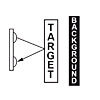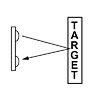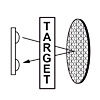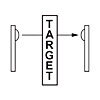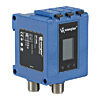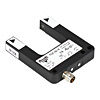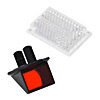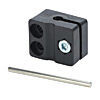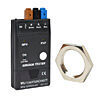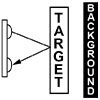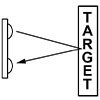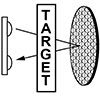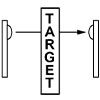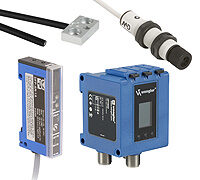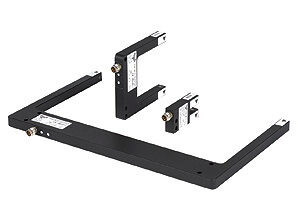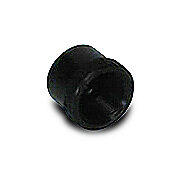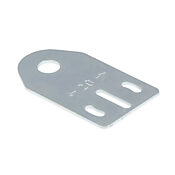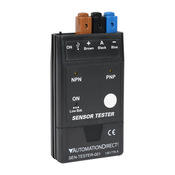 Cookies are not enabled on your browser.
Cookies are not enabled on your browser.Cookies are required for our site. Please enable cookies in your browser preferences to continue.
- Barcode / RFID / Vision
- Bulk Wire & Cable
- Cables (Terminated)
- Circuit Protection / Fuses / Disconnects
- Communications
- Drives & Soft Starters
- Enclosure Thermal Management & Lights
- Enclosures & Racks
- Field I/O
- HMI (Human Machine Interface)
- Hydraulic Components
- Motion Control
- Motor Controls
- Motors
- Pneumatic Components
- Power Products (Electrical)
- Power Transmission (Mechanical)
- Process Control & Measurement
- Programmable Controllers
- Pushbuttons / Switches / Indicators
- Relays / Timers
- Safety
- Sensors / Encoders
- Stacklights
- Structural Frames / Rails
- Tools & Test Equipment
- Valves
- Water (Potable) Components
- Wiring Solutions
- Retired Products
- Programmable Logic Controllers
- Productivity1000 PLCs
- Productivity2000 PLCs
- Productivity3000 PLCs
- ProductivityCODESYS
- LS Electric XGB Series PLCs
- ProductivityOpen
- CLICK PLCs
-
Do-more H2 PLCs or
Do-more T1H Series - Do-more BRX PLCs
- C-more Touch Panels
- AC & DC Drives
- Motion Control Components
- Servos
- StrideLinx
- Pneumatics
Configuration Utilities
- PLC Family Selector
- P1000 PLC Systems
- P2000 PLC Systems
- P3000 PLC Systems
- ProductivityCODESYS
- CLICK PLC Systems
- Do-more® BRX PLC Systems
- LS-Electric® XGB PLC Systems
- Productivity®Open Systems
- AC Motors
- Datalogic® Safety Light Curtains
- LS-Electric® Servo Systems
- Nitra® Pneumatic Grippers
- Object Detection (Sensors)
- PAL Controller Configurator
- Precision Gearbox Selector
- Protos X® Field I/O
- Quadritalia® Modular Enclosures
- Stellar® Soft Starters
- Stepper System Selector
- SureFrame T-slot Extrusion
- SureMotion® XYZ Gantry
- SureServo2® System Selector
- SureStep® Linear Actuators
- Timing Belts & Pulleys
- Werma® Stacklights
- ZIPLinks
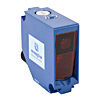
Use our selection assistance tool to narrow your search.
Photoelectric sensors detect object presence or distance in a wide range of industrial applications. They typically contain all required optics and electronics in a single unit, requiring only power to provide an output based on their specifications and object detection criteria.

This page will refresh momentarily.
Warning
Some of the selected facets have been selected by the {{ assistanceData.title }} Help.
Resetting/clearing ALL facets will end {{ assistanceData.title }} Help.
![Help icon]() Selection Assistance - {{ assistanceData.title }}
Selection Assistance - {{ assistanceData.title }}
Stride Interactive Product Tour Request
Photoelectric Sensors
Photoelectric sensors use light and optics to detect object presence or distance. They provide an output based on object detection or distance criteria. Photoelectric sensors from brands such as Autonics, Contrinex, Datalogic, di-soric, Eaton, Leuze, Micro Detectors, and Wenglor, as well as our own AchieVe, AutomationDirect, and ProSense brands, can detect a wide variety of materials and measure distances from a few millimeters up to hundreds of meters.
For part listings and specifications, go to Shop Now
Background Suppression
Newest Additions!
- AchieVe FKL series 18mm tubular metal photoelectric sensors
- Autonics miniature photoelectric sensors
- AchieVe FDM series 12mm tubular photoelectric sensors
Diffuse photoelectric sensors with background suppression detect objects by sensing emitted light reflected directly from the target. They offer reliable detection while filtering out reflections from surrounding objects. Blue light models accurately sense dark, shiny, or highly reflective targets.
Diffuse
Newest Additions!
- AchieVe FKL series 18mm tubular metal photoelectric sensors
- Autonics miniature rectangular photoelectric sensors
- Wenglor OPT25 series laser distance measurement photoelectric sensors
- AchieVe FDM series 12mm tubular photoelectric sensors
Diffuse photoelectric sensors consist of an emitter and receiver combined into a single compact housing. They sense presence, color, or contrast by emitting a light beam and sensing the light reflected directly from the target. They are easy to install and adjust but have short sensing distances.
Retroreflective
Newest Additions!
- AchieVe FKL series 18mm tubular metal photoelectric sensors
- Autonics miniature rectangular photoelectric sensors
- AchieVe FDM series 12mm tubular photoelectric sensors
Retroreflective sensors bounce light off a fixed reflector and determine a target's presence when it breaks the beam. They have longer sensing distances than diffuse sensors but require alignment. Polarized retroreflective sensors improve detection accuracy by filtering out ambient light sources.
Through-Beam
Newest Additions!
- AchieVe FKL series 18mm tubular metal photoelectric sensors
- Autonics miniature rectangular photoelectric sensors
- AchieVe FDM series 12mm tubular photoelectric sensors
Through-beam photoelectric sensors consist of an emitter and a receiver in separate housings. The emitter sends a beam of light to the receiver, which determines a target is present when the beam is interrupted. These sensors offer the longest sensing distances but require precise alignment.
Fiber Optic Sensors
Fiber optic sensors provide a remotely mounted electronics and optics package with fiber optic extensions to the sensing area. They offer supreme noise protection, and their small size is perfect for extremely tight locations or where even low-power electronics are not allowed.
Fork Sensors
Fork sensors (also called slot or "U" sensors) offer advantages over standard through-beam sensors, including identical mechanical / optical axis, operational reliability and repeatability with transmitter and receiver built into the same housing.
Reflectors, Lens Adapters and Splitters
Newest Additions!
- Wenglor signal splitter
Reflectors, lens adapters, shutters, and splitters are available for proper operation and detection or to alter the size and/or path of the emitted light for specialized installations.
Mounting Brackets and Rods
Brackets and adapters are available in various materials for mounting tubular and rectangular photoelectric sensors.
Sensor Tester and Spare Parts
Replacement hex nuts and a sensor tester are available to securely install and validate the operation of photoelectric sensors.
Check out our job openings
Free Online PLC Training
FREE Video Tutorials
FREE e-Newsletter
Automation Notebook
Product Literature
White Papers
News, Product and Training Bulletins
E-Books
 Safe &
Secure
Safe &
Secure

We accept VISA, MasterCard, Discover, American Express, PayPal or company purchase orders.
Voted #1 mid-sized employer in Atlanta
Check out our
job openings

